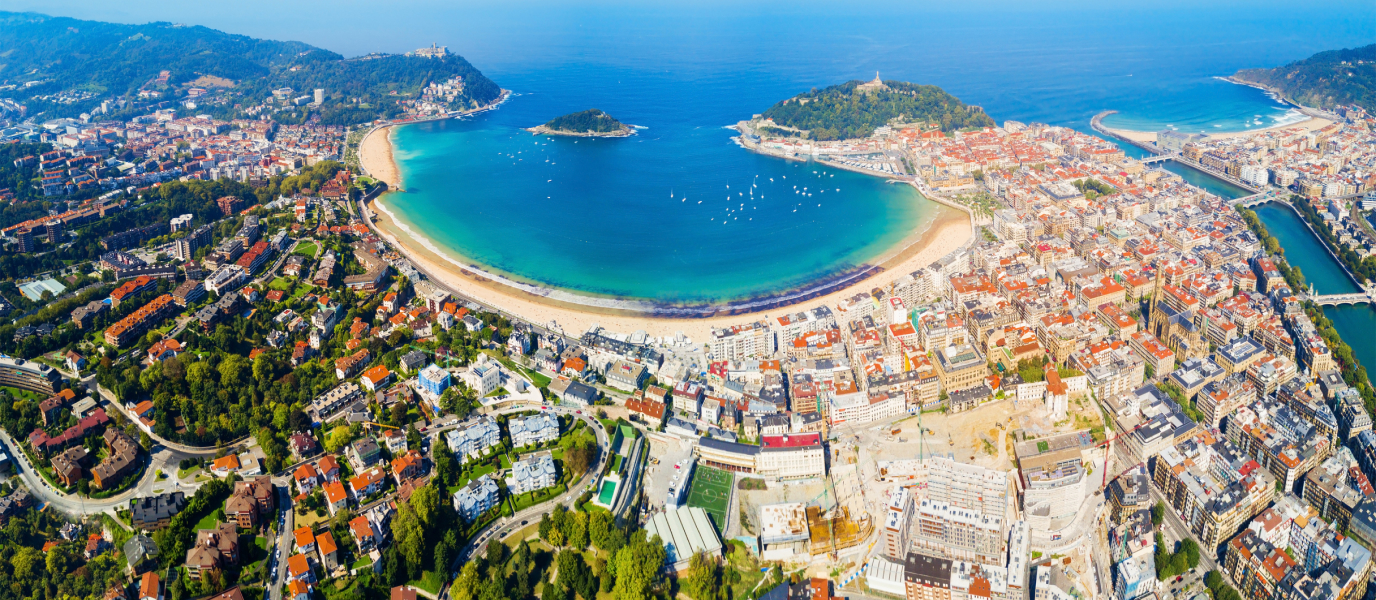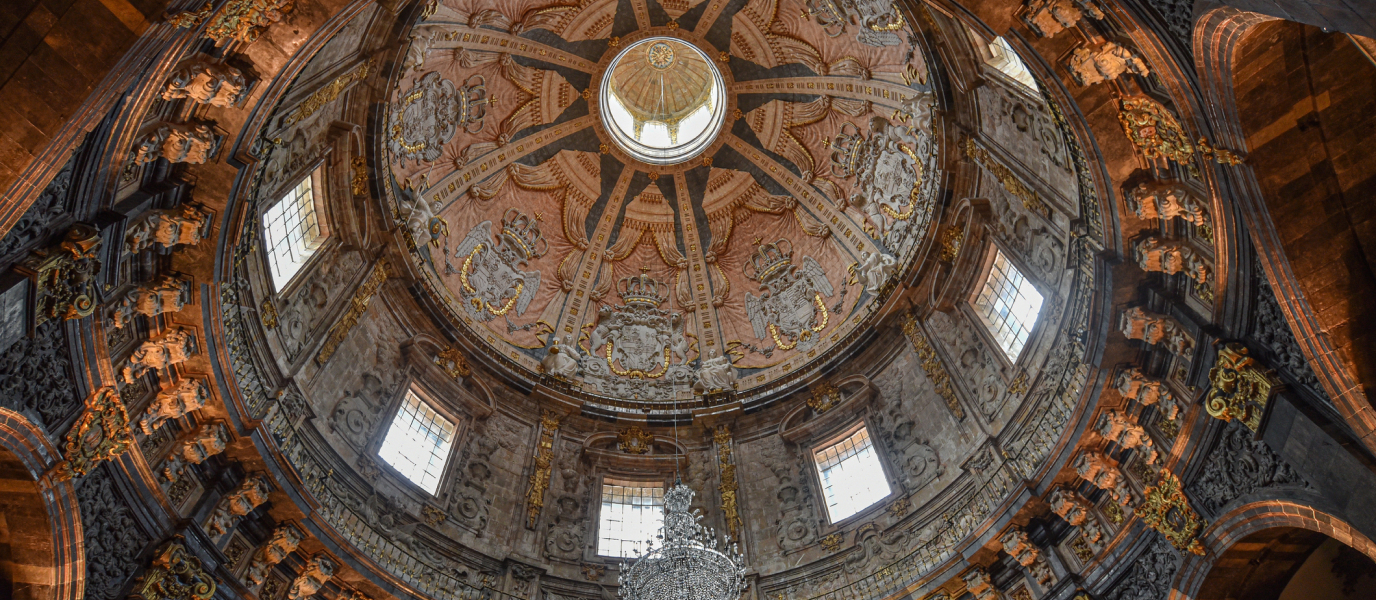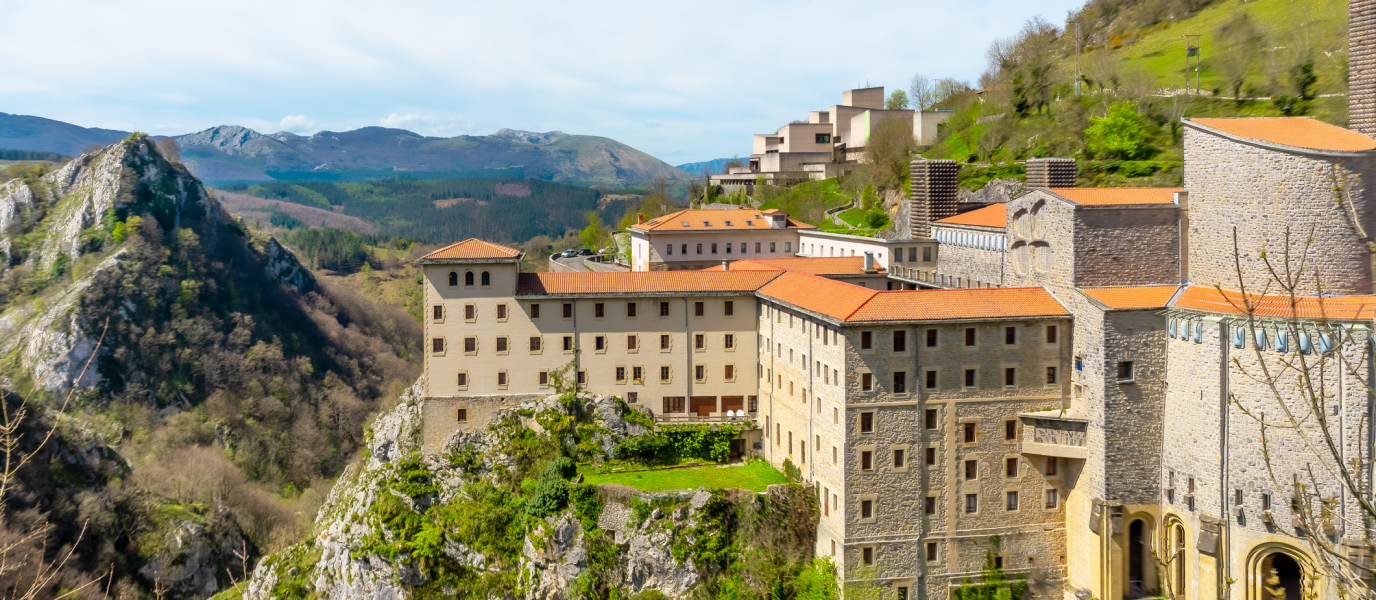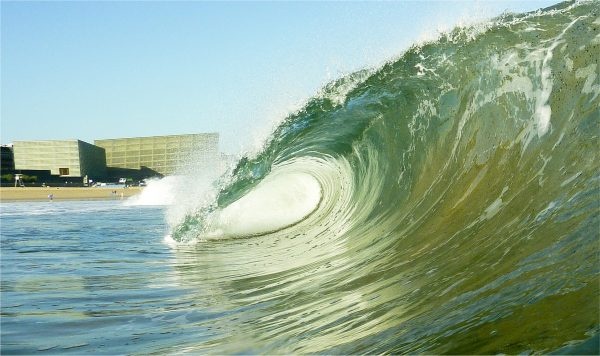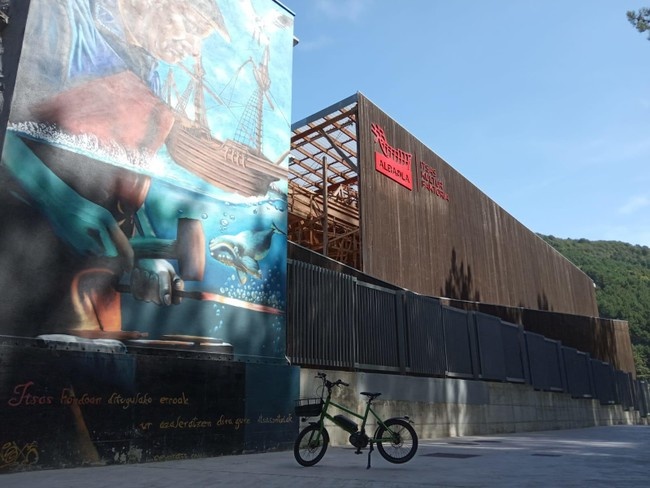The stunning Victoria Eugenia Theatre looks like it just opened its doors yesterday, even though it dates from 1912. It underwent a significant overhaul between 2001 and 2007 and has been returned to its former glory. This lavish, belle époque venue celebrated its 100th anniversary in 2012 and for decades hosted the San Sebastián International Film Festival before the event was moved to Kursaal Palace in 1999. The emblematic building has borne witness to key historical moments as well as the transformation of this lovely city.
Located in the epicentre of San Sebastián, the theatre was built at the river end of the Boulevard around the same time as some other iconic landmarks: the spectacular luxury hotel María Cristina and the sprawling 2,460 m2 Okendo Gardens. The project was driven by the Sociedad de Fomento de San Sebastián, a public municipal company established on 17 March 1902, dedicated to the socio-economic development of the city. The venue was inaugurated by Queen Victoria Eugenia, consort of King Alfonso XIII, with the play ‘En Flandes se ha puesto el sol’ (The Sun Has Set in Flanders) by the acclaimed Spanish playwright Eduardo Marquina
The Victoria Eugenia Theatre of San Sebastián
The sandstone building was designed by the architect Francisco de Urcola in 1912 and reflects the neo-plateresque court style architecture that was all the range in Paris and Vienna during that period, especially at the 1900 Paris Exposition.
The main facade is composed of impressive Corinthian columns inserted between the three grandiose entrance doors and balconies – very similar to that of the Monterrey Palace in Salamanca. Four sculptures representing opera, tragedy, comedy and drama sit on top of these columns. The facade is also decorated with busts of important Basque personalities linked to the arts, such as the Count of Peñaflorida and Juan Crisóstomo de Arriaga ‘the Spanish Mozart’. The lateral facade on Calle Reina Regente integrates an iron and glass marquee where carriages would pass through.
Art at every turn
The ceiling of the main room is covered with spectacular allegorical frescos, designed by the artist Ignacio Ugarte. The painted panels in the foyer depict the main muses of the dramatic arts: music, poetry and dance, and represent the work of Asensio Martiarena. The gorgeous stage curtain was designed by talented Basque set designer Eloy Garay.
The theatre is managed by the public corporation Donostia Kultura and is owned by the San Sebastián City Council. It can seat up to 900 people in the main room and it also has several other multi-purpose rooms that can be used to host events related to the performing arts. The HQ offices for the San Sebastián International Film Festival, the Jazz Festival and the classical music festival the Quincena Musical are also located within the building.
Why not check out what’s on while you are in the city? It’s a great way to enjoy a performance and discover the artistic treasures this building has to offer. Did we mention the spectacular views it affords of the Urumea River and the Kursaal Palace? You can also take the guided tour ‘San Sebastián Esencial’, organised by the Tourism Office to explore the building.
A venue steeped in history
The theatre has seen many international personalities grace its stage, including the opera singers Beniamino Gigli, Luciano Pavarotti and Montserrat Caballé. This was where Alfred Hitchcook’s acclaimed psychological thriller Vertigo was premiered in 1958. It has also welcomed national superstars such Mikel Laboa, the patriarch of Basque music, among others.
The theatre has also played other roles throughout history: from a club for aristocrats, to a dance hall, a barricade, a refuge for artists between wars, a platform for Basque culture, a Francoist platform, the HQ for international festivals, a cradle for songwriters, a dressing room for renowned personalities, a bullhorn for the recognition of rights, and without fail it has remained a versatile space.
In 2012, the theatre presented a very special commemorative exhibit on the occasion of the its centennial entitled ‘#VICTORIAEUGENIA: the social network’. It was on display at Kutza Kultur and included hundreds of clippings, articles, posters and pictures from a wide of sources, including the press and private individuals. There was also the video installation ‘100 Years, 100 Stories’, which compiled anecdotes, reflections and experiences of individuals who had come in through its doors as either performers, spectators, managers or employees.
A comprehensive overhaul
The building underwent a large-scale refurbishment in the 2000s as a result of the serious signs of deterioration it was presenting. The initiative included a redesign of the layout of offices and other rooms; the rehabilitation of the facade; the refurbishment of the roof and balconies; a revamp in terms of decoration; and the restoration of the paintings. The result was the creation of an innovative performance centre, equipped with cutting-edge equipment and amenities but which retained its belle époque charm.
The total cost of the refurbishment reached 21 million euros and was shared equally between the Ministry of Public Works and Transport of Spain and the City Council of San Sebastián.
The theatre is not just embedded in the social fabric of San Sebastián but that of the history of performance arts for the many talents and moments it witnessed – two of such moments were the international premieres of Alfred Hitchcock’s films Vertigo and North by Northwest.




































































